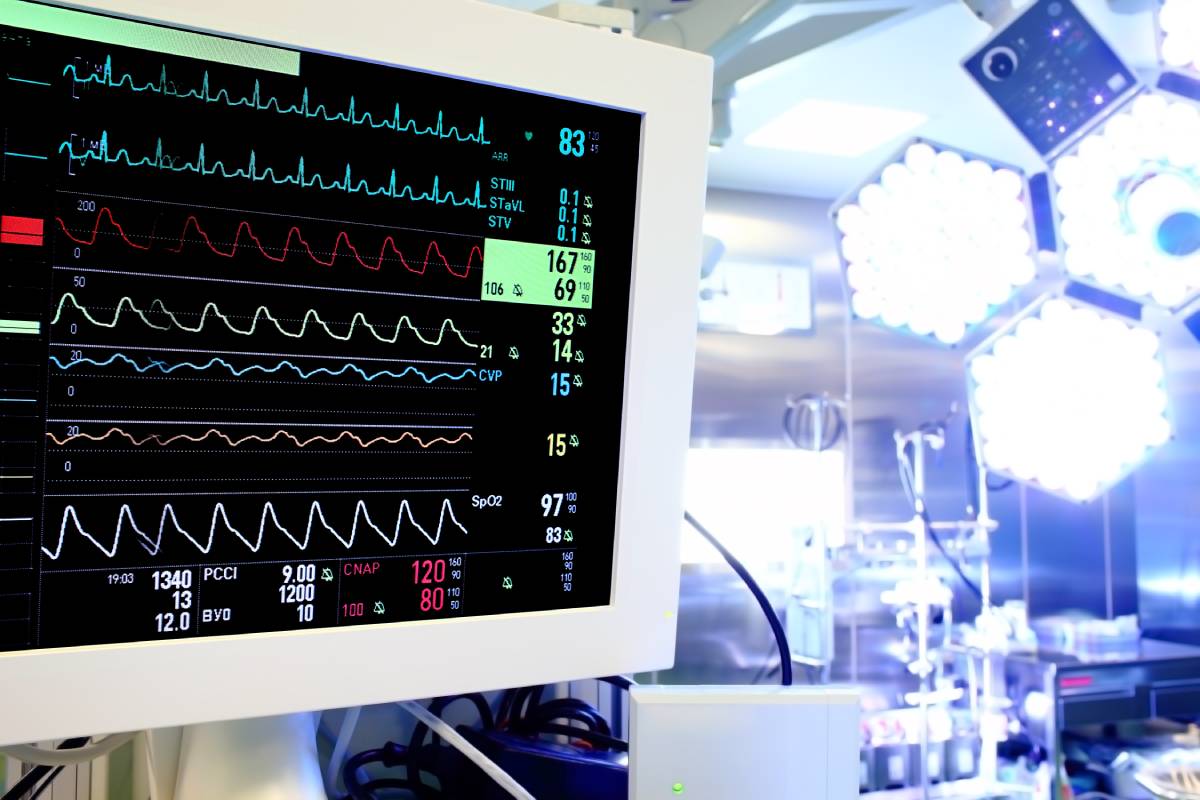Uses of Mean Arterial Pressure (MAP)

Mean arterial pressure (MAP) is a physiological parameter representing the average pressure in a patient’s arteries during one cardiac cycle. The uses of MAP include assessing blood flow to vital organs and guiding clinical interventions for perfusion, making it a valuable tool in many situations.
MAP is influenced by multiple physiological forces and estimates the average blood pressure in an individual 1. There are several methods to calculate it, but in general, it centers more on diastolic pressure than systolic pressure. Normal MAP ranges from 70 to 100 mmHg, indicating sufficient perfusion to the organs. If MAP falls below 60 mmHg, there is a risk of inadequate blood flow to organs, potentially leading to organ failure 2,3.
One of the uses of MAP is to guide blood pressure management in patients with hypertension or hypotension. In hypertensive patients, MAP helps assess the effectiveness of antihypertensive treatments. For hypotensive patients, particularly in emergency settings, maintaining an adequate MAP is vital to ensure that vital organs, such as the brain and kidneys, receive sufficient blood flow. Clinicians often target specific MAP values when delivering vasopressors to raise blood pressure in hypotensive patients, especially during shock or trauma 4,5.
In intensive care units, MAP is routinely monitored in critically ill patients. Conditions like septic shock, hemorrhagic shock, and cardiogenic shock significantly impair blood circulation, making MAP a key indicator of patient status—clinicians use MAP to evaluate the severity of shock and guide therapeutic interventions.
MAP is directly linked to organ perfusion; organs like the kidneys, brain, and heart are particularly sensitive to changes in blood pressure. A low MAP can lead to ischemia, where organs receive insufficient oxygen due to reduced blood flow. For example, in renal medicine, maintaining an adequate MAP is crucial to ensure proper kidney function, especially in patients with chronic kidney disease or those receiving dialysis 3,6,7.
MAP also has uses during surgery, particularly in major operations or those involving high-risk patients. Anesthesiologists monitor MAP closely in these situations to ensure that the patient remains hemodynamically stable. Anesthesia can impact blood pressure by causing vasodilation or suppressing cardiac function, which can reduce MAP. By monitoring MAP, anesthesiologists can adjust the depth of anesthesia, fluids, and medications to maintain adequate perfusion to vital organs throughout the procedure 8.
MAP is also a valuable parameter in cardiovascular research and drug development. It is used in clinical trials to assess the efficacy of new drugs or other cardiovascular interventions, as well as to monitor the state of certain medical conditions 9,10.
MAP is a vital clinical parameter used across various medical disciplines. Its role in guiding blood pressure management, monitoring critically ill patients, assessing organ perfusion, and supporting anesthesia during surgery underscores its importance in ensuring patient safety and optimizing treatment outcomes.
References
1. Magder, S. The meaning of blood pressure Luigi Forni. Crit. Care 22, 1–10 (2018).
2. DeMers, D. & Wachs, D. Physiology, Mean Arterial Pressure. StatPearls (2023).
3. Physiology, Mean Arterial Pressure – StatPearls – NCBI Bookshelf. Available at: https://www.ncbi.nlm.nih.gov/books/NBK538226/.
4. Kandil, H., Soliman, A., Alghamdi, N. S., Jennings, J. R. & El-Baz, A. Using Mean Arterial Pressure in Hypertension Diagnosis versus Using Either Systolic or Diastolic Blood Pressure Measurements. Biomedicines (2023). doi:10.3390/biomedicines11030849
5. Muntner, P. et al. Blood Pressure Assessment in Adults in Clinical Practice and Clinic-Based Research: JACC Scientific Expert Panel. Journal of the American College of Cardiology (2019). doi:10.1016/j.jacc.2018.10.069
6. Dionne, J. M. et al. Mean Arterial Pressure and Chronic Kidney Disease Progression in the CKiD Cohort. Hypertension (2021). doi:10.1161/HYPERTENSIONAHA.120.16692
7. Kim, Y. et al. Target value of mean arterial pressure in patients undergoing continuous renal replacement therapy due to acute kidney injury. BMC Nephrol. (2021). doi:10.1186/s12882-020-02227-4
8. Saugel, B. & Sessler, D. I. Perioperative Blood Pressure Management. Anesthesiology (2021). doi:10.1097/ALN.0000000000003610
9. Liu, M. et al. Long-Term Visit-to-Visit Mean Arterial Pressure Variability and the Risk of Heart Failure and All-Cause Mortality. Front. Cardiovasc. Med. (2021). doi:10.3389/fcvm.2021.665117
10. Gao, Q. et al. Association between mean arterial pressure and clinical outcomes among patients with heart failure. ESC Hear. Fail. (2023). doi:10.1002/ehf2.14401
